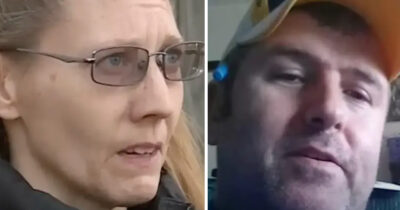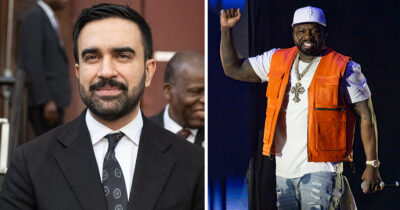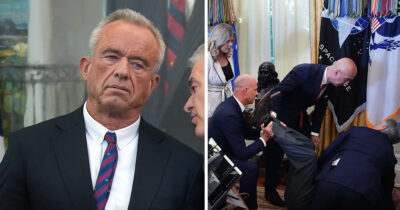
Dear Zachary: A Letter to a Son About His Father is hands down one of the saddest documentaries I’ve ever seen. I honestly don’t think I’ve ever been so moved by a film before – I completely broke down and cried watching it.
It hit me in a way I wasn’t expecting, and I haven’t been able to stop thinking about it since.
Gut-wrenching turn
Dear Zachary: A Letter to a Son About His Father is one of the most captivating documentaries I’ve ever watched, and I’m pretty sure I’m not the only one who feels that way. As heartbreaking and infuriating as this film is, it is still above all a beautiful tribute to friendship, courage and resilience.
If you haven’t seen Dear Zachary, it tells the heartbreaking story of Andrew Bagby, a 28-year-old doctor whose life was tragically cut short by his ex-lover, Shirley Jane Turner.
The film takes an even more gut-wrenching turn when it’s revealed that Turner was pregnant with Andrew’s child at the time of his death. A huge part of the documentary focuses on the relentless fight of Andrew’s parents, Kate and David Bagby, as they struggle to gain custody of their grandson, Zachary, and ensure his safety and future.
The film, which was written, produced, directed, edited, shot, and scored by Kurt Kuenne, was released in 2008. Kurt Kuenne and Andrew Bagby grew up side by side in the tranquil suburbs of San Jose, California.

Their friendship was one of those rare, unbreakable bonds formed in the simplicity of shared childhood memories. As they navigated life together, their paths intertwined in ways only the closest of friends could understand — until a heartbreaking tragedy would change everything.
Born on September 25, 1973, to parents Kathleen and David Bagby, Andrew was a medical student. During his time at Memorial University in Newfoundland, he began a relationship with Shirley Turner, a recent medical school graduate who was nearly thirteen years his senior.
Andrew’s family, friends, and colleagues didn’t like Shirley due to her off-putting behavior. They couldn’t help but feel that Shirley wasn’t really a good match for Andrew – especially her tendency to make inappropriate or overly sexual comments bothered them.
Shot 5 times
Still, they chose not to say anything, respecting Andrew’s decision to keep on dating Shirley. After all, he hadn’t been in a relationship since his painful breakup with his ex-fiancée, and they understood that he might have been looking for someone to fill the void. They didn’t want to add to his struggles by questioning his choices.
After Andrew graduated in 2000, he moved to New York to begin a surgical residency, while Turner relocated to Iowa for her own career. Despite the distance, they maintained their relationship.
However, in 2001, Andrew found himself unhappy in his surgical residency and decided to switch to a family practice residency in Latrobe, Pennsylvania, which he felt was a better fit for him. In fact, he couldn’t have been happier.
But as time passed, the relationship between Andrew and Shirley began to deteriorate, with Shirley becoming increasingly possessive.
In October of that year, Shirley purchased a handgun along with ammunition and began taking firearms lessons. During this time, she exhibited increasingly obsessive behavior towards Andrew, constantly calling him and verbally abusing him during their phone conversations.
On November 3, 2001, during a visit to Pennsylvania, Andrew broke up with Shirley.
She returned to Iowa, but just two days later, she drove nearly 1,000 miles back to Latrobe. Early on the morning of November 5, she arranged to meet Andrew at Keystone State Park. Later that night, he was found dead by a homeless man searching dumpsters for aluminum cans.
The police would later confirm that Andrew had been shot five times: once in the face, once in the chest, once in the back of the head, and twice in the buttocks.
Shirley Turner was immediately suspected, as the ammunition found at the scene matched what she had purchased earlier.
A new, shocking turn
She told authorities that she had been bedridden and sick all day on November 5th, yet evidence showed she had made phone calls from Latrobe, used Andrew’s house phone to call in sick, and accessed several of her personal accounts from his computer.
By the time a warrant was issued for her arrest, Turner had already fled to Canada. Once she learned she was a suspect in the murder investigation, she returned to her hometown of St. John’s, Newfoundland. Meanwhile, Kurt Kuenne began gathering footage from old home movies and interviewing Andrew’s parents, David and Kathleen, for a documentary about his late friend’s life.
Soon, the tragic story would take a new, shocking turn.
In St. John’s, Shirley Turner made a shocking revelation — she was pregnant with Andrew Bagby’s child.
She was arrested in December 2001, but shockingly released on bail as the extradition process to the U.S. dragged on. Turner’s lawyers used legal technicalities to delay her extradition, and in the meantime, she gave birth to a baby boy, naming him Zachary, on July 18, 2002.
Determined to be part of Zachary’s life, Andrew’s parents, David and Kathleen, moved to Canada in an effort to gain custody of their grandson. In November 2002, a provincial court ruled that there was enough evidence linking Turner to Andrew’s murder, leading to her re-arrest. David and Kathleen were granted custody of Zachary, but the legal battle was far from over.
Legal battle
In an unexpected twist, Turner wrote a letter to the judge who had locked her up. In an unusual move, she was given legal advice on how to appeal her arrest and imprisonment. In January 2003, Judge Gale Welsh granted her bail, controversially stating that Turner didn’t pose a threat to society at large. This meant that, despite the murder charge, Turner regained custody of Zachary, though David and Kathleen were able to arrange regular visitations.
While this legal tug-of-war unfolded, filmmaker Kurt Kuenne traveled across the United Kingdom and the U.S., interviewing Andrew’s friends and extended family for a documentary. He even visited Newfoundland in July 2003, where he spent time with Zachary, trying to piece together the tragic story of his friend’s life and legacy.
On August 18, 2003, Shirley Turner tragically took her own life—and that of her thirteen-month-old son, Zachary—by jumping into the Atlantic Ocean in a heartbreaking murder-suicide. The devastating loss sent shockwaves through Andrew Bagby’s parents, David and Kathleen, who were not only grieving the death of their grandson but also enraged by the Canadian legal system’s failure to protect him. They launched a campaign to reform Canada’s bail laws, convinced that these laws had allowed Turner to kill her child and herself.

Meanwhile, Kurt Kuenne, who had been working on his documentary about Andrew’s life, found himself facing roadblocks in his efforts to interview the prosecutors and judges involved in Turner’s release. Despite this, the tragedy sparked a broader conversation. In 2006, a panel from Newfoundland’s Ministry of Justice released a report stating that Zachary’s death was preventable and that the government’s handling of the case was inadequate. Turner’s psychiatrist was found guilty of misconduct for helping her post bail, and the director of Newfoundland’s child welfare agency resigned.
David Bagby, consumed by grief and anger, poured his emotions into writing Dance with the Devil: A Memoir of Murder and Loss, which became a best-seller in Canada in 2007. Kurt Kuenne, who had been tirelessly documenting Andrew’s life, finished his film—one that had evolved into something far more profound than he could have imagined. The documentary, a raw and emotional tribute, was dedicated to the memories of both Andrew and Zachary.
But it wasn’t just a story about tragedy; it was about the resilience of the people left behind. The film ends with David and Kathleen, along with their friends and family, reflecting on Andrew and Zachary’s lives. Kurt, in the process of making the film, realized that it was not only about Andrew’s death but also about the profound impact the Bagbys had on those around them. The documentary was, in many ways, a tribute to their strength and perseverance in the face of unimaginable pain.

”The biggest challenge for me came in the editing of the movie, because this film transitioned from a project intended only for loved ones to one that was intended for a mass audience. I wanted the audience to feel like they knew Andrew and his parents, but I also needed to keep the story moving forward, to keep the audience engaged,” Kurt said.
When Kurt Kuenne set out to make Dear Zachary, it was originally meant to be a personal tribute — a cinematic scrapbook filled with loving memories for the son who would never get the chance to know his father, Andrew Bagby.
Kurt interviewed friends, family, and those who had known Andrew, capturing their remembrances of him in a film that would, in its own way, preserve the essence of his life. What began as a project for a small circle of loved ones soon turned into something much more profound.
As the tragic events surrounding Andrew and Shirley Turner unfolded, Kuenne realized that this story had the potential to reach far beyond personal circles.
He knew that Dear Zachary could bring attention to a flawed legal system that had failed to protect Zachary, and so, with great courage, he decided to release the film to the general public. The response was overwhelming, but the pain of watching such a heartbreaking story was almost too much for many to bear.
The film was difficult to watch, raw, and filled with anguish, yet it became a powerful tool for change.
Kuenne didn’t stop at the release of the film. He sent copies of Dear Zachary to every one of Canada’s 400+ members of Parliament, hoping to spark a much-needed conversation about the country’s bail laws. And it worked. After attending a screening of the film, MP Scott Andrews of Avalon was moved to action. On October 23, 2009, he introduced Bill C-464—also known as “Zachary’s Bill”—to the House of Commons. The bill aimed to ensure that the safety of children would be the foremost concern during bail hearings and custody disputes, especially when the person in question had been charged with a serious crime.
The bill was a direct response to the failure to protect Zachary, and it sparked conversations about the need for change in the Canadian justice system. After being introduced to the Senate in March 2010, it was signed into law on December 16, 2010—over seven years after Zachary’s death and more than two years after Dear Zachary was released. It was a hard-fought victory, one that showed the power of one film to change the course of legislation and protect future children from the kind of tragedy Zachary faced.
Even though Dear Zachary was an incredibly difficult watch for so many, its impact was undeniable. It didn’t just capture the life of one man and the loss of a child — it became a catalyst for change. The film’s release and the law it helped inspire were a testament to the power of storytelling to enact real-world change, proving that even the most painful stories can ultimately lead to justice and a better future for others.
Kuenne’s film is important because it doesn’t shy away from the brutal reality of loss. It’s not just a documentary about a man’s murder, but a heartfelt exploration of how families cope with grief, injustice, and the emotional scars that linger long after the cameras stop rolling. The rawness and honesty of the film make it not just a tribute, but a call to action — reminding us of the importance of justice, protection, and the indelible bonds of family.
And in my view, the Bagbys are among the most resilient and courageous people to ever walk this earth. They sacrificed so much to fight for the only remaining piece of their beloved son. Their strength in the face of unimaginable loss is nothing short of extraordinary.
After watching this, I honestly can’t decide if I’m more angry at the system that mishandled the entire case or at Shirley herself. It’s just heartbreaking. If only the system had done its job… if only.
For those with Amazon Prime, the film is available to watch there, and it’s also streaming on Pluto TV. Please share this article so more people can experience this incredibly tragic, yet important story.
READ MORE
- Opinion: Barron Trump storm proves all that’s wrong with the US
- Jane Fonda ‘calls out Donald Trump’ during SAG award speech




